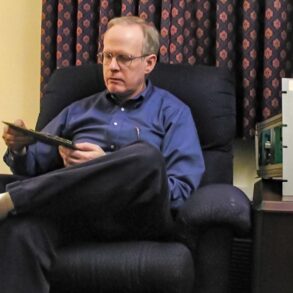In this decision, the European Patent Office did not
grant a patent on a system for structured queries in social
networks, particularly for mapping natural language text input to
elements of a social-graph database. Here are the practical
takeaways of the decision T 1089/17 (Ambiguous queries on online social
networks/FACEBOOK) of 7.2.2020 of Technical Board of Appeal
3.5.07:
Key takeaways
Defining a natural language query is per se not a technical
task, but lies in a non-technical field.
The invention
This European patent application, filed by Facebook, Inc.,
generally relates to social graphs and performing searches for
objects within a social-networking environment.
The invention proposes a social-networking system that may, in
response to a text query received from a user, generate structured
queries that include references to particular social-graph
elements. By providing suggested structured queries in response to
a user’s text query, the social-networking system may provide a
way for users of an online social network to search for elements
represented in a social graph based on their social-graph
attributes and their relation to various social-graph elements.
For example, when a user enters the ambiguous search term
“facebook” as part of the search query “people who
like facebook” (a shown in the figure below), the online
social network may propose several matching elements of the social
graph to the user for selection. If the user then selects one of
the proposed matching elements (for example, “Facebook”),
the system proposes a set of queries related to the selected graph
element (for example, “People who work for Facebook”,
“People who like Facebook and Stanford”), from which the
user can select one to be performed.

Fig. 4C of EP 2 750 056
Here is how the invention is defined in claim 1:
-
Claim 1 (main request)
A method of operating an online social network (160), comprising:
accessing (510), by a computing device (160), a database (164) of
the online social network (160), the database (164) implemented as
a social-graph database (164) comprising a plurality of nodes (202,
204) and a plurality of edges (206) connecting the nodes (202,
204), each of the edges (206) between two of the nodes (202, 204)
representing a single degree of separation between them, the nodes
(202, 204) comprising: a first node corresponding to a first user
associated with the online social network (160); and a plurality of
second nodes that each correspond to a concept or a second user
associated with the online social network (160); by the computing
device: – receiving (520) from a client system (130) of the
first user an unstructured text query comprising an ambiguous
n-gram; – identifying (530) in the social-graph database
(164) a plurality of second nodes or a plurality of edges
corresponding to the ambiguous n-gram; – generating (540) a
first set of structured queries, each structured query from the
first set of structured queries corresponding to an identified
second node or identified edge, the structured query comprising a
reference to the identified second node or identified edge; –
receiving (550) from the client system (130) of the first user a
selected first structured query from the first set of structured
queries, the first structured query corresponding to a selected
second node or selected edge from the identified second nodes or
identified edges, respectively; and – generating (560) a
second set of structured queries, each structured query of the
second set of structured queries comprising a reference to the
selected second node or selected edge.
Is it technical?
Already in the European search opinion, the application was
considered to be directed “at a cognitive problem”. In
essence, the claim elements related to the social graph were found
to be “purely social-administrative”, and the elements
related to the query processing were considered to have “a
purely cognitive character”. Following the EPO’s appproach
for mixed-type inventions, the examiner held that the closest prior
art was a general-purpose computer system, and that implementing
the non-technical method on such notoriously known hardware was
obvious. The examining division essentially maintained this
position throughout the prosecution procedure, so that the
application was refused for lack of inventive step in first
instance.
On appeal, the applicant argued that the operation and function
of the claimed search engine may be considered to lie in a
technical field. The board agreed as far as none of the cited
documents was considered to disclose a search process which maps
natural language text input to elements of a social-graph database
in the context of a social network. The board therefore took
document D5 (a patent application by Facebook itself) as the
starting point for assessing inventive step.
The board found that the invention as claimed differed from D5
by “generating a second set of structured queries, each
structured query of the second set of structured queries comprising
a reference to the selected second node or selected edge”.
Here is how the board interpreted these features:
The distinguishing features have the effect of generating a set
of exemplary queries regarding a selected element of the social
graph. In this respect, the Board observes that the application
discloses ranking the structured queries based on advertising
sponsorship (description, paragraph [0075]), which seems to suggest
that the generated queries may serve a non-technical purpose and
result from business considerations.
The claimed generation of queries according to features 8 and
8.1 does not contribute to a “further” technical effect.
In particular, the Board does not agree that the human-machine
interaction is improved, as no interaction between the user
and the system after the disambiguation of the entered data is
claimed. The distinguishing features do not involve any
further interaction or the display of the generated second set of
structured queries to the user.
Moreover, the Board considers that defining a natural
language query is per se not a technical task, but lies in a
non-technical field. As the claim is entirely silent
regarding the user interface for entering search queries, the Board
is not convinced that the claimed method solves a technical problem
in the area of user interfaces.
The applicant also argued that the fact that claimed
subject-matter had some relation to “semantic” aspects
did not inevitably imply that it was of non-technical character.
Non-technical character could only be affirmed if absolutely no
further technical considerations, for example related to the
database/search engine and their structure and/or function, were
involved. But also this argument did not persuade the board:
The Board is not convinced that the distinguishing features
involve any “further technical considerations” (see
opinion G 3/08, OJ EPO 2011, 10, Reasons 13.5.1), as the generation
of the second set of queries is based on non-technical
considerations regarding the desired query semantics in the context
of the social graph. The Board observes that the social graph,
which is known from document D5, constitutes social data not
serving a technical purpose, and the distinguishing features do not
define whether or how the social graph as a data structure is used
to generate the second set of structured queries.
Lastly, the applicant argued that the generated search term
related to the underlying graph structure of the database, so that
the invention takes the technical structure of the underlying
database and search engine into account, which makes a technical
contribution. But the board also did not follow this argument:
However, the social graph is already known from document D5, and
the distinguishing features 8 and 8.1 define the generation of the
second set of structured queries only in terms of
non-technical semantic aspects. Consequently, the Board
considers that features 8 and 8.1 are not about exercising
technical control over the functioning of the search engine in the
sense of decision T 2230/10. Hence, the Board is not persuaded by
the appellant’s arguments.
As a result, the board held that the distinguishing features do
not contribute to the solution of a technical problem and cannot be
considered for the assessment of inventive step. Claim 1 was found
to lack an inventive step.
More information
You can read the whole decision here: T 1089/17 (Ambiguous queries on online social
networks/FACEBOOK)
The content of this article is intended to provide a general
guide to the subject matter. Specialist advice should be sought
about your specific circumstances.






